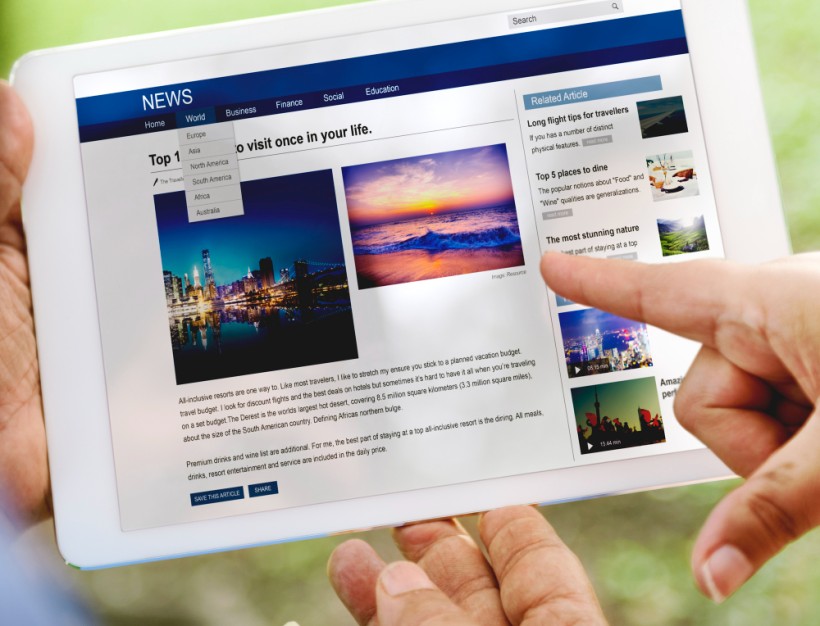Why “good” LinkedIn performance is hard to define
LinkedIn shows likes, impressions, and comments — but it rarely shows context. What’s “good” for a law firm might be average for a product-led tech company. A post that flops in one industry might outperform in another.
And yet, most people measure success by whatever’s trending on their feed.
This is where smart creators zoom out. They look at what works in their space, with their goals, using the right formats.
This article breaks down performance benchmarks by industry, post type, and intent — so you can stop chasing virality and start setting goals that make sense for what you’re building.
Metrics that matter (and how to track them)
Here’s the shortlist of metrics worth your attention — plus how to actually track them:
→ Engagement rate (ER)
Formula: (likes + comments + shares) ÷ impressions
This tells you how often people interact with your content. Anything above 2% is solid. Above 5%? You’re in great shape — especially in low-engagement industries.
→ Impressions
Think of this as reach: how many times your content was seen. It’s useful for spotting trends (e.g. are more people seeing your stuff week over week?), but not a signal of quality on its own.
→ Click-through rate (CTR)
Especially relevant for carousels and outbound links. A low CTR usually means your hook isn’t strong enough — or the visual format isn’t working.
→ Follower growth
One of the most underrated metrics. If people follow you after seeing a post, they want more — that’s a win. Track it weekly.
→ Profile views
Big signal that your content made someone curious. Usually spikes after storytelling posts or anything with strong founder POV.
→ Comments
Not just a number — look at who is commenting. Ideal buyers? Great. Randoms? Still helpful for reach, but don’t overvalue it.
→ Saves & shares
Saves = high value. Shares = amplification. These don’t always show up in native analytics, so you’ll need to check post-by-post.
→ Leads / DMs / replies
This is the real goal for most founders — people reaching out to work with you. Harder to tie directly to a single post, but track when these messages come in and what triggered them.
You can’t improve what you’re not measuring. So start tracking these weekly — even just in a simple spreadsheet.
Patterns will emerge. You’ll see what topics, formats, and timing work best — and more importantly, you’ll stop chasing the wrong numbers.
Benchmarks by industry: How different sectors perform on LinkedIn
Every industry plays by different rules on LinkedIn — different audience sizes, different buyer behavior, and different appetites for content.
So instead of comparing yourself to the loudest voices on the platform, compare yourself to the right ones.
Here’s what “good” typically looks like, based on recent platform data and what we’ve seen across hundreds of client accounts:
B2B Tech / SaaS
→ Average engagement rate: 3.6%
→ Strong impressions: 4.2k
→ Best format: carousels, customer stories, founder POV
Note: Thought leadership posts from technical founders do particularly well — especially when paired with visuals.
Professional Services (Legal, Consulting, Finance)
→ Average engagement rate: 3.2%
→ Strong impressions: 3.53k
→ Best format: clear text posts, short carousels, expert commentary
Note: Trust is everything here. Value-first content performs better than cleverness.
Healthcare & Life Sciences
→ Average engagement rate: 3.3%
→ Strong impressions: 2.8k
→ Best format: educational carousels, behind-the-scenes content
Note: This space can be dry — but that’s your opportunity. Clear, accessible content stands out fast.
Retail & Consumer Goods
→ Average engagement rate: 3.9%
→ Strong impressions: 3.18k
→ Best format: lifestyle visuals, product backstory, team spotlights
Note: Emotion beats logic here. Humanize the brand, and you’ll win attention.
Recruiting / HR / Staffing
→ Average engagement rate: 3.8%
→ Best format: hot takes, hiring advice, job market trends
Note: This space is noisy, but rewards bold opinions. Don’t be afraid to take a stance.
Nonprofits / Higher Ed / Manufacturing
→ Average engagement rates: — 3.0% – 4.0%
→ Strong impressions: 4.8k
→ Focus on clarity, real stories, and consistency. The bar is low — and that’s your opening.
The big takeaway?
You’re probably not underperforming. You’re just comparing your content to someone playing a completely different game.
Why your post type matters just as much as your industry
Format matters — a lot more than people think. Some posts are just easier to engage with, skim, and feel something from.
Here’s how the main post types typically stack up on LinkedIn:
→ Text-only posts
→ Engagement rate: 4%
→ Strengths: fast to produce, great for storytelling or strong opinion
→ Weaknesses: easy to skip if the hook doesn’t land
→ Carousels (PDFs)
→ Engagement rate: 6.1%
→ Strengths: high dwell time, excellent for education or visual storytelling
→ Weaknesses: time-intensive to create, requires strong copy and design
→ Image posts
→ Engagement rate: 4.8%
→ Strengths: human moments, behind-the-scenes, team spotlights
→ Weaknesses: need to feel authentic — stock photos usually flop
→ Video posts
→ Engagement rate: 5.6% (but varies wildly)
→ Strengths: great for showing personality or breaking down complex topics
→ Weaknesses: requires high trust to watch — weak intros get skipped fast
→ Polls
→ Engagement rate: 4.40% (but often low quality)
→ Strengths: boost reach fast
→ Weaknesses: often seen as engagement bait if not thoughtfully framed
→ Links
→ Engagement rate: <1% (on average)
→ Strengths: good for directing traffic if paired with strong content
→ Weaknesses: LinkedIn deprioritizes them — especially if the link is in the post body
The format you choose should match your goal.
→ Want more comments? Go text-based and provoke discussion.
→ Want shares and saves? Teach something with a carousel.
→ Want to humanize your brand? Use visuals or short videos.
Don’t just default to what’s easy. Use the format that gives your message the best shot at landing.
A mediocre idea in the right format can outperform a great one in the wrong one.
How to set meaningful goals for your LinkedIn performance
Most people set the wrong goals on LinkedIn. They chase virality. Or follower milestones. Or engagement spikes that don’t connect to revenue.
But if you’re building a business, not just a personal brand, you need a smarter way to measure success.
Here’s how to think about it:
→ Start with the business goal
Are you trying to drive inbound leads? Build awareness for a launch? Attract talent?
Your content goals should ladder up to that — not just chase vanity metrics.
→ Pick 1–2 key metrics to focus on
Trying to optimize everything at once leads to noise. Instead:
→ If you want leads, track DMs and profile views.
→ If you want visibility, track impressions and shares.
→ If you want authority, track comments from ICPs and saves.
→ Use benchmarks as a compass, not a scoreboard
If your average post gets 1,000 impressions today, make it 2,000 in 60 days.
Focus on trending upward — not hitting someone else’s high score.
→ Watch for directional signals
→ Is your follower count growing?
→ Are more people viewing your profile after posts?
→ Are new prospects referencing your content on calls?
These are signals that your content is working — even if the engagement isn’t going viral.
→ Set cadence goals too
“Post 3x/week for 8 weeks” is a better goal than “go viral.”
Consistency builds data. Data builds insight. Insight drives strategy.
LinkedIn rewards people who play the long game — and so do buyers.
So stop aiming for explosions. Aim for momentum. That’s what compounds.
What to do when your content underperforms
Underperformance isn’t failure, it’s feedback. Here’s what to check when a post flops:
→ Was the hook strong enough?
If your first 1–2 lines don’t stop the scroll, nothing else matters. Weak hook = invisible post.
→ Was it posted at the right time?
Try morning windows when your audience is online. For most B2B founders, that’s between 8–11am local time.
→ Did the format match the message?
Long, rambling story? Should’ve been a carousel. Quick insight? Should’ve stayed text-only.
Sometimes it’s not what you said — it’s how you packaged it.
→ Was it clear who the post was for?
If you’re writing for “everyone,” you’re writing for no one. Be specific. Name the reader’s situation. Call out the role or pain.
→ Did it feel too safe?
Safe content is forgettable. Posts that perform tend to lean into opinion, insight, or vulnerability. If it could’ve been written by ChatGPT in 5 seconds, it won’t land.
→ Was it over-optimized?
Trying too hard to engineer engagement — polls, emojis, forced CTAs — can backfire. People smell it. Aim for clarity and usefulness instead.
→ Was it just… a miss?
Sometimes content flops for no clear reason. Don’t overthink it. Track patterns, not one-offs.
Here’s the real takeaway: one post isn’t the story.
Content is a long game — and every “bad” post is just one data point that helps you make the next one better.
Final thoughts: Stop guessing, start measuring
It’s clear so far, you can’t improve what you don’t understand.
Benchmarks give you a baseline. Metrics give you direction. Consistent tracking unlocks growth.
Once you know what “good” looks like for your niche and goals, you stop second-guessing. You post with purpose, adjust faster, and build momentum that compounds.
If you’re done guessing, that’s why we built Column. We don’t just build strategy — we handle the whole thing. From ideas to content creation to publishing and distribution, we make sure every part of your LinkedIn presence is working toward real business growth.
Let’s build a LinkedIn presence that drives real business growth. Reach out today.

Johnson is a Content Strategist at Column. He helps brands craft content that drives visibility and results. He studied Economics at the University of Ibadan and brings over years of experience in direct response marketing, combining strategy, creativity, and data-backed thinking.
Connect with him on LinkedIn.





